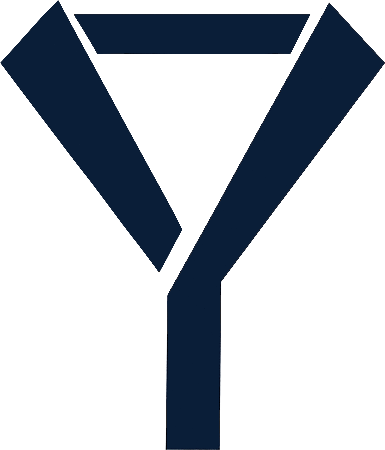When it comes to classic menswear, nothing shows sophistication quite like a well-tailored suit. But while many of us admire its greatness, few pause to consider what truly makes up this timeless ensemble. Understanding the key suit components not only deepens your appreciation for craftsmanship but also helps you make smarter choices when investing in your wardrobe. In this guide, we’ll break down the essential elements that form a suit, explaining their roles, variations, and how they work together to create that unmistakable aura of style and confidence.
1. Suit jacket (Blazer/Suit coat)
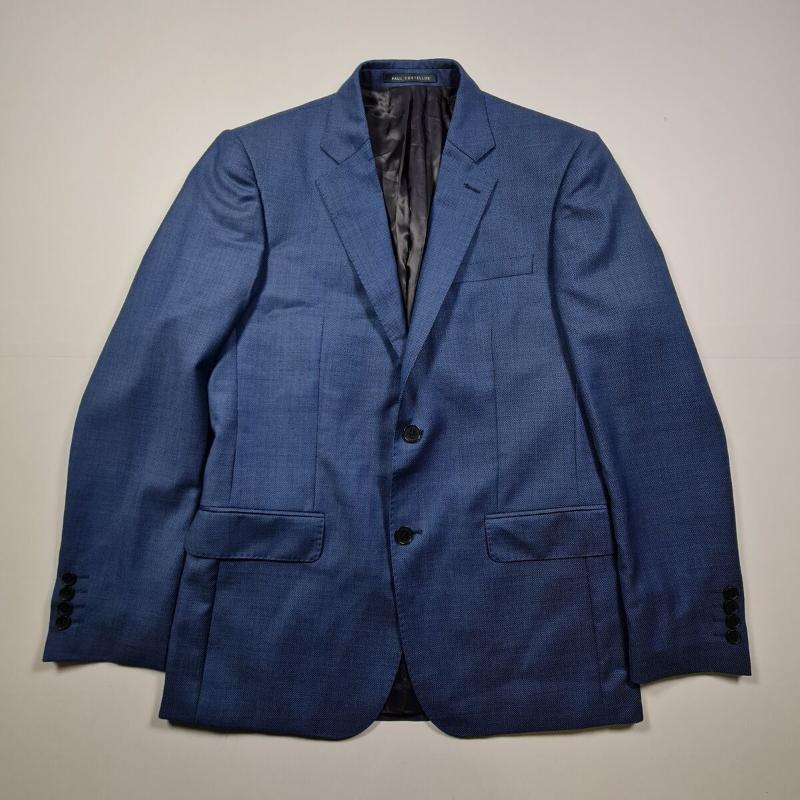
The suit jacket – also known as the blazer or suit coat – is the defining centerpiece of any suit, setting the tone for the entire ensemble. Its construction is a fine balance of form and function, combining structure with style to create that sharp, tailored silhouette.
At a glance, key components include the shoulders, lapels, buttons, pockets, and vents.
1/ The shoulder (often called the suit’s foundation) can be soft and natural or heavily padded, shaping the overall posture and presence of the jacket.
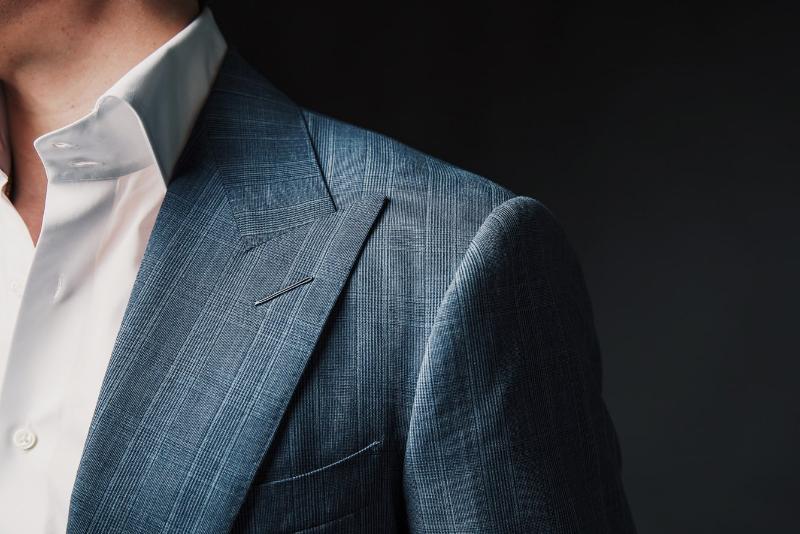
2/ Lapels frame the chest and come in three classic styles:
- The notch lapel, easily recognized by its small cut-out where the collar meets the lapel, is perfect for business and everyday suits.
- The peak lapel, with sharp, upward-pointing edges that exude formality and confidence;
- The shawl lapel, which offers a smooth, rounded edge, is typically reserved for tuxedos and formal evening wear.
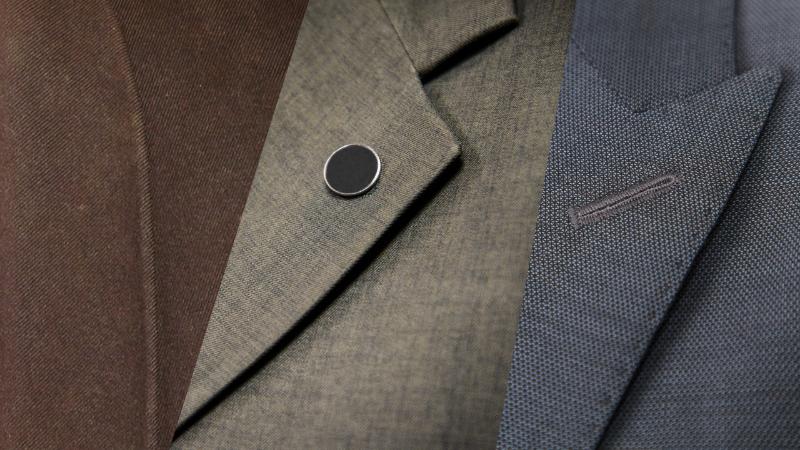
3/ Buttons also play a crucial role, not just functionally but aesthetically. Most jackets are designed with either a one-button, two-button, or three-button closure, each subtly altering the jacket’s visual proportions.
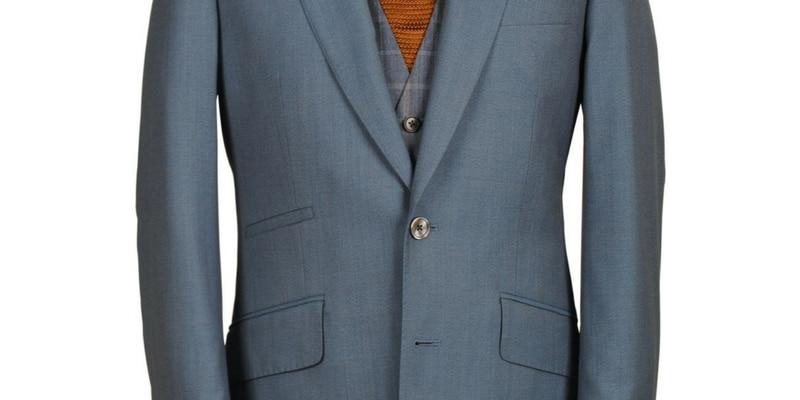
4/ Pockets vary from flap pockets and jetted pockets to the more casual patch pockets, each contributing its own character to the jacket.
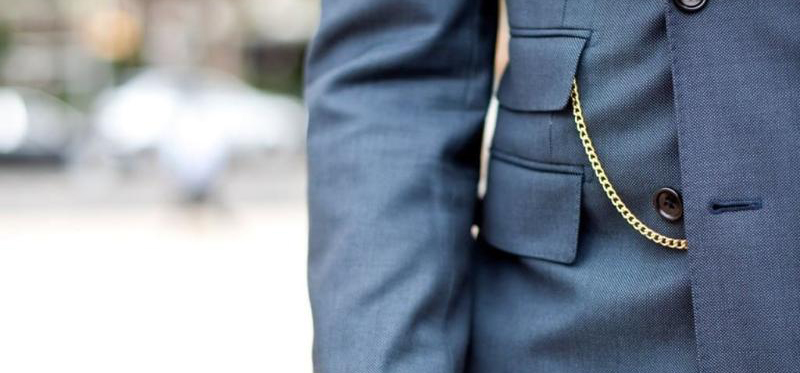
5/ The back of the jacket features vents, either single, double, or none. They affect both movement and style, with double vents offering a more refined European flair.
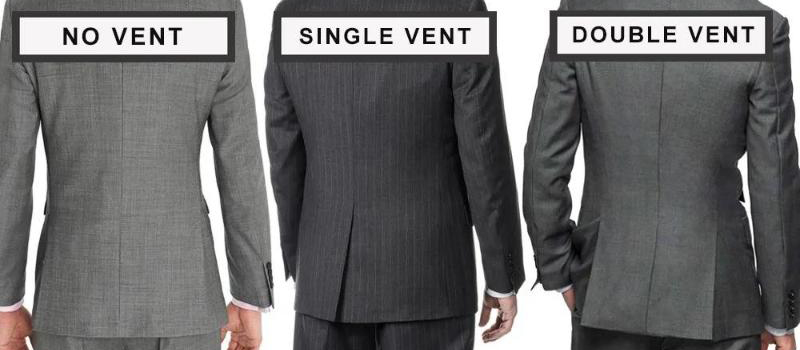
6/ Equally important, though less visible, is the jacket’s internal construction. Here’s where terms like half-canvas and full-canvas come in. A full-canvas construction involves a layer of horsehair or similar material stitched through the entire front of the jacket, offering the best in durability, breathability, and natural drape.
Half-canvas jackets feature this supportive layer only from the shoulders down to the chest, providing a balance of structure and affordability. Fully fused jackets, while more budget-friendly, rely on glued interlining and may sacrifice long-term shape and comfort.
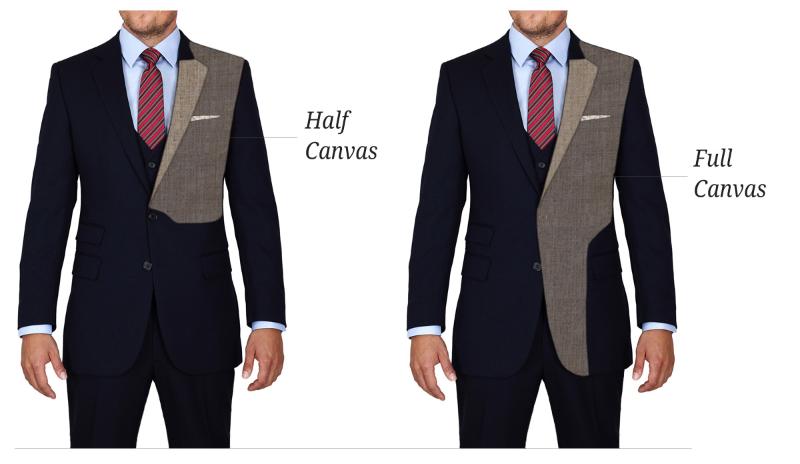
7/ Padding and lining, whether minimal for a light summer jacket or full for winter wear, also influence the feel and fit, shaping how the jacket hugs the body and moves with you.
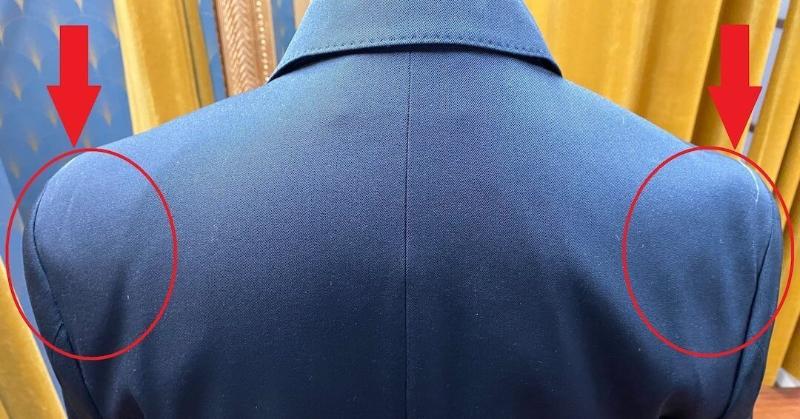
2. Suit trousers (Pants/Slacks)
While the jacket may catch the eye first, suit trousers are essential in ensuring the entire look feels cohesive, polished, and comfortable. Properly cut trousers provide balance and proportion, making or breaking the overall silhouette of your suit.
Let’s start with the waistband, the anchor point that holds everything in place. A well-fitted waistband should sit naturally at your waist, not too tight to cause discomfort, and not so loose that it requires constant adjustment. Some trousers feature side adjusters or belt loops, offering flexibility in fit and style preferences.
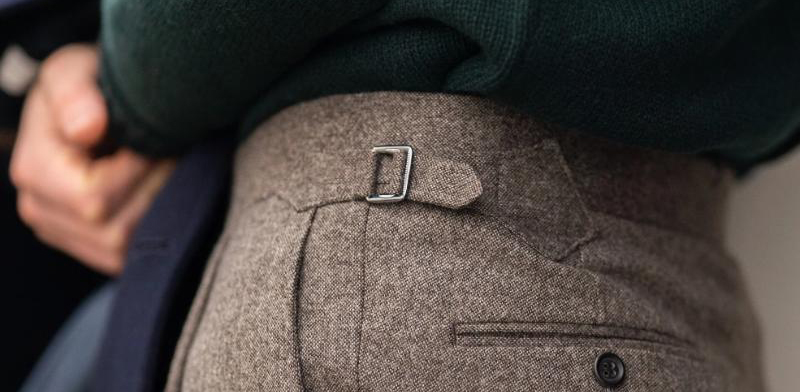
Next, we have the pleats. It is the folds at the front of the trousers that offer extra room and ease of movement. There are two main types: flat-front trousers, which have a clean, sleek appearance and are the go-to choice for modern, streamlined looks, and pleated trousers, which provide a bit more room through the thigh and offer a touch of classic elegance, especially appreciated in traditional or vintage-inspired tailoring.
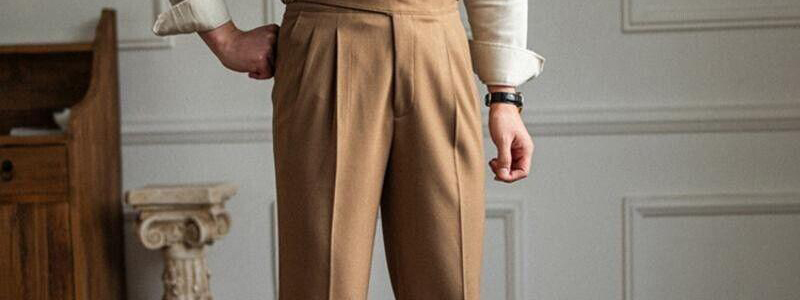
The leg opening and overall cut determine how the trousers fall over your shoes and shape your lower body. Options range from slim-fit trousers, which taper closely along the leg for a sharp, contemporary silhouette, to classic-fit trousers, offering more room throughout the thigh and leg, ideal for a timeless, comfortable style. Somewhere in between, the regular fit provides a balanced option that flatters most body types without appearing too tight or too loose.
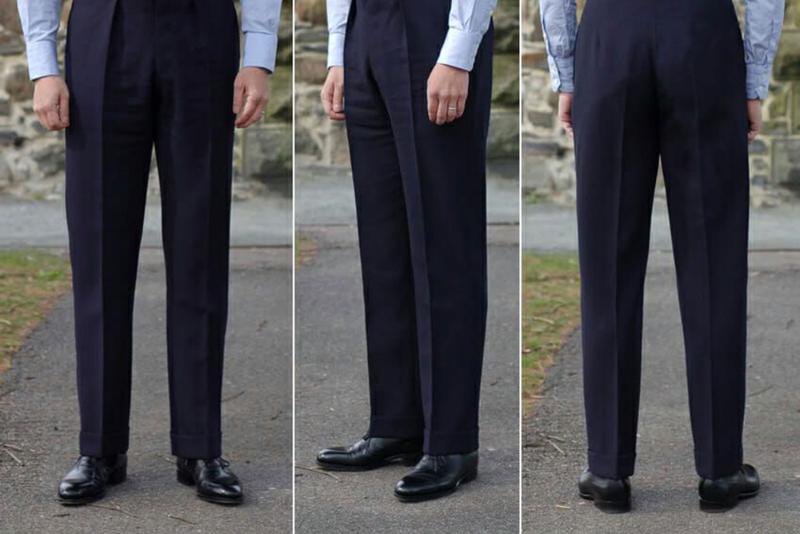
Other subtle but impactful details include the choice between cuffed hems (also known as turn-ups), which add weight and help the trousers drape neatly, and plain hems, which maintain a clean, minimal finish. The rise, which is how high the trousers sit on your waist, also plays a role in comfort and aesthetics, with high-rise trousers offering a vintage appeal and mid- to low-rise styles aligning with modern trends.
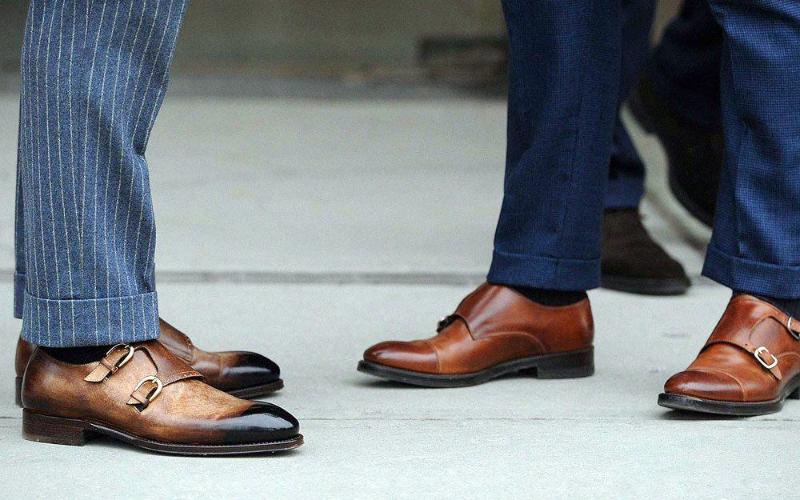
3. Waistcoat (Vest)
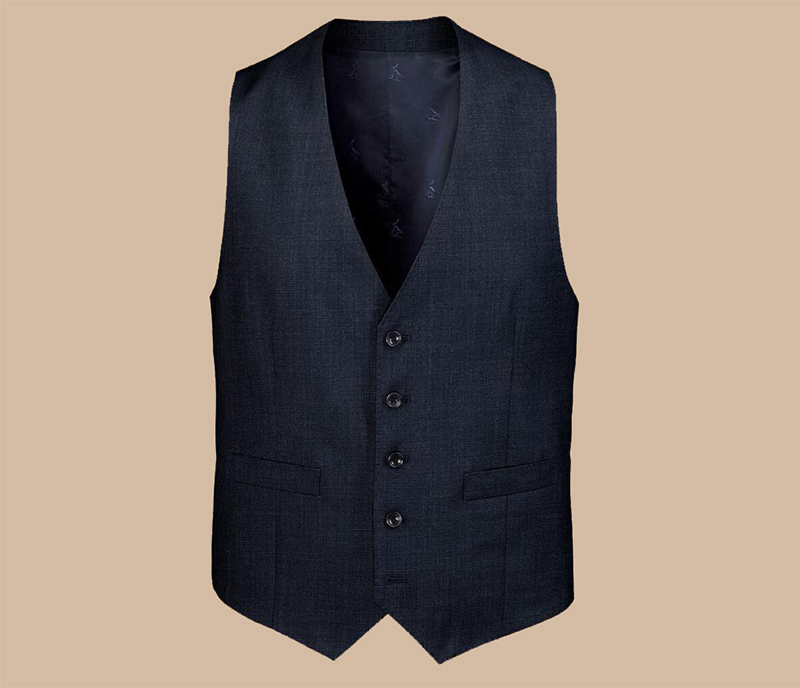
The waistcoat, or vest, is the third piece that elevates a standard suit into a three-piece suit, bringing an extra layer of depth, formality, and sophistication. While it’s optional in many settings, knowing when and how to wear a waistcoat can set you apart with a refined, intentional look.
Traditionally, waistcoats are favored for formal occasions such as weddings, black-tie optional events, and important business meetings. However, they’ve also found their place in more relaxed, vintage-inspired styles, often worn without the jacket for a sharp yet approachable vibe.
In terms of structure, a classic waistcoat features a button front, typically with five or six buttons, and it’s generally advised to leave the bottom button undone—a subtle nod to tradition and comfort. The neckline can vary, with V-neck waistcoats being the standard, designed to sit neatly under your suit jacket and showcase your shirt and tie.
For more formal or fashion-forward looks, you might encounter shawl collar waistcoats, which add a touch of elegance through their smooth, rounded edges.
The back of the waistcoat is usually crafted from a lighter fabric, often silk or satin, and includes an adjustable strap to fine-tune the fit. This not only reduces bulk when layered under a jacket but also maintains a polished appearance even when you remove your jacket.
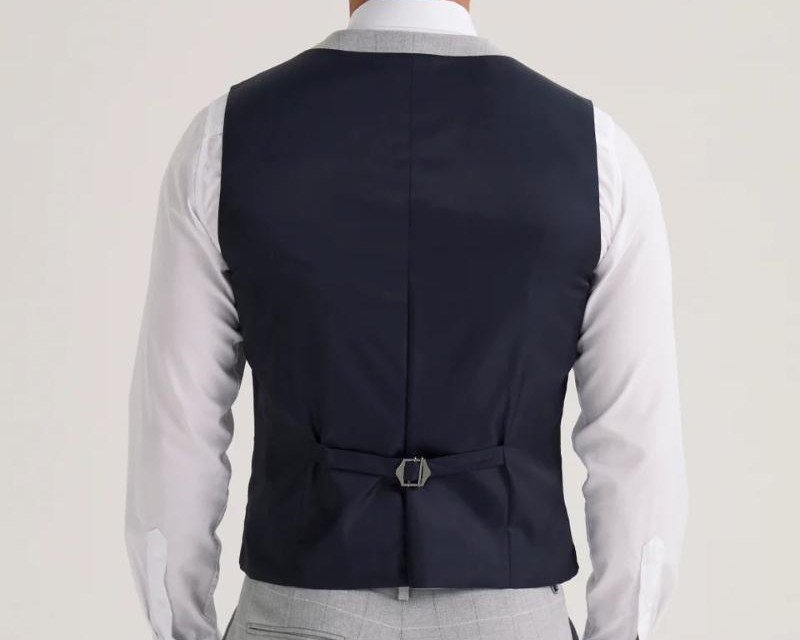
When it comes to coordination, the golden rule is that your waistcoat should match or complement both your suit jacket and trousers, typically made from the same fabric and color for a seamless look. That said, contrasting waistcoats, such as a subtle grey vest paired with a navy suit, can offer a tasteful twist when done thoughtfully.
4. Suit supporting components & Accessories
While the suit itself forms the backbone of your ensemble, it’s the supporting components and accessories that truly complete and personalize your look. Together, they elevate your suit from simple to striking, allowing your personal style to shine through every thoughtful detail.
Shirt
First and foremost, the shirt acts as a crisp canvas beneath your suit. A well-fitted dress shirt, with its clean lines and structured collar, enhances the sharpness of your jacket and frames your tie.
The classic white or light blue shirt remains the most versatile, but subtle patterns and pastel shades can add depth without overpowering your overall style.
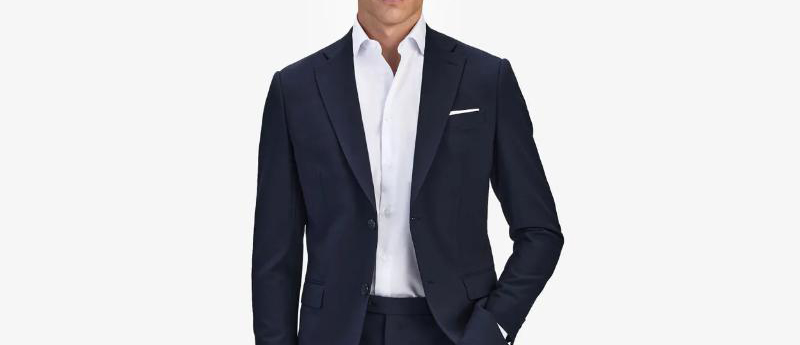
Tie
Moving on to the tie or bow tie, these accessories inject personality and flair. Your choice of tie—whether a sleek silk number for formal occasions or a textured knit tie for a relaxed vibe—can set the mood for your entire outfit.
Color coordination is key: your tie should complement, not clash with, your suit and shirt. Bow ties, though less common, exude charm and confidence when worn well, making them ideal for formal events or when you want to stand out with classic elegance.
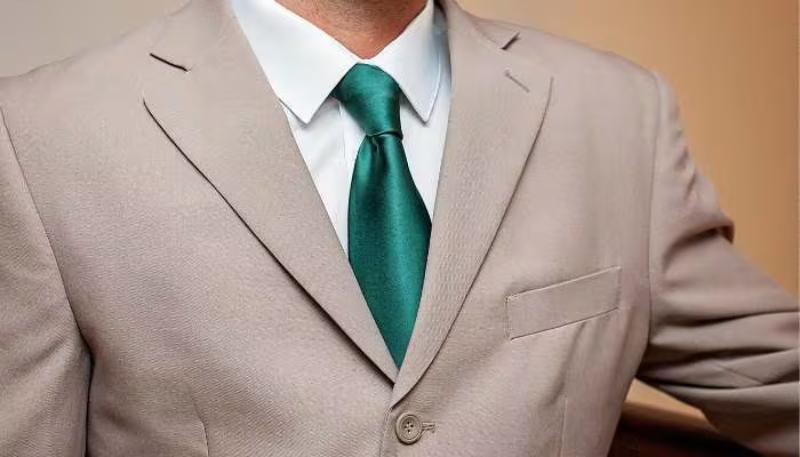
Pocket square + Lapel pin
The pocket square and lapel pin are small details that carry significant stylistic weight. A thoughtfully chosen pocket square—whether it’s a classic white linen fold or a bold patterned silk—adds a splash of color and sophistication to your chest pocket.
Meanwhile, a lapel pin or boutonnière can bring a personal touch, whether subtle or statement-making, especially for special occasions like weddings or award ceremonies.
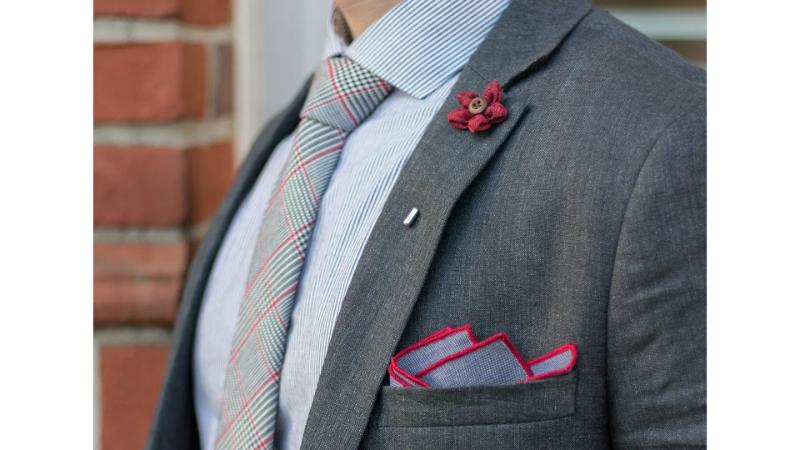
Shoe + Belt
Finally, no suit is complete without the right shoes and belt. Shoes anchor your outfit, both literally and stylistically. Classic choices like Oxford, Derby, or monk-strap shoes in polished leather are timeless, while loafers offer a smart-casual alternative.
The golden rule? Your belt and shoes should always match in color and finish to maintain a harmonious, put-together look. For black suits, opt for black shoes; for navy or grey suits, rich brown shoes can add warmth and depth.
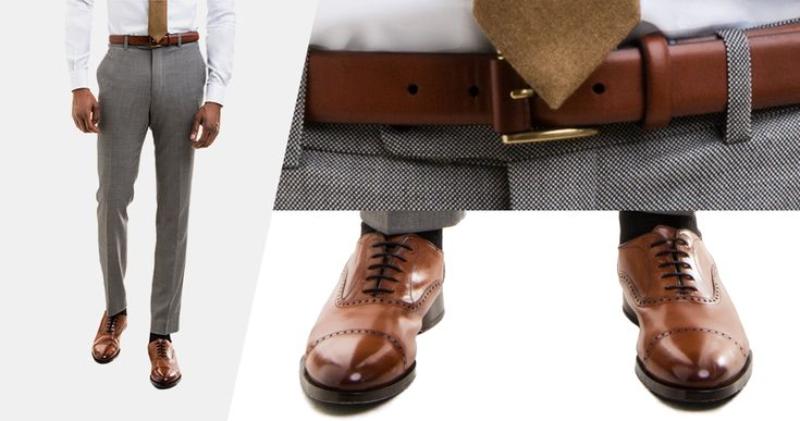
5. Common suit variations and their component
Understanding the key differences between suit variations is essential for building a versatile, season-appropriate wardrobe. Let’s break it down by looking at the primary types of suits and the unique components that distinguish each.
Two-piece suit
This is the most common style in modern menswear, which consists of a jacket and trousers made from the same fabric and color. This versatile pairing works well for business, casual office wear, weddings, or semi-formal occasions.
The jacket typically features a single-breasted design with one to three buttons, and the trousers are cut to a standard fit, either flat-front or pleated, depending on the wearer’s preference. The simplicity and minimalism of this set make it adaptable to nearly any event.
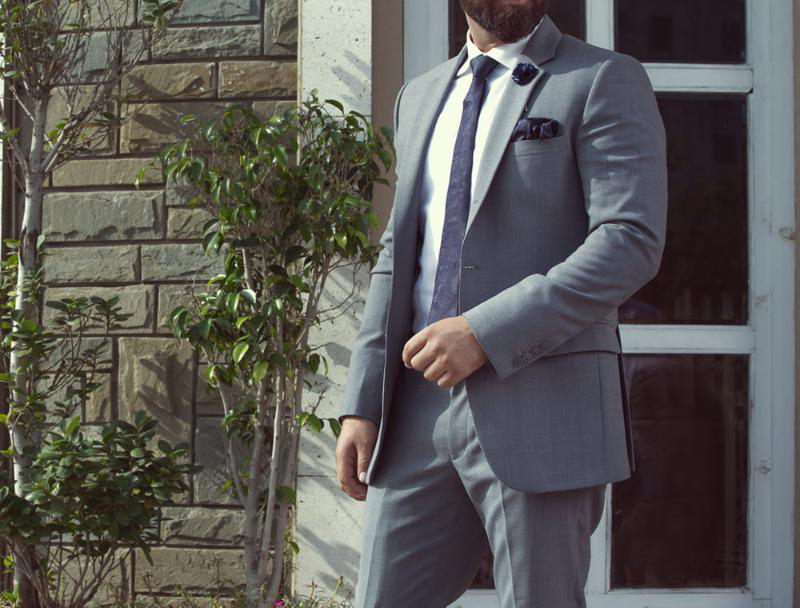
Three-piece suit
In contrast with the 2 piece, the three-piece suit adds a waistcoat to the mix, which not only enhances the overall formality of the look but also offers additional warmth and structure.
The waistcoat is typically a slim, fitted garment, with a matching fabric to the jacket and trousers. This component is what separates the three-piece from its two-piece counterpart, providing an extra layer of refinement for events like formal weddings or business functions where you want to make a strong sartorial statement.

Single-breasted suit and double-breasted suit
When it comes to the single-breasted versus double-breasted design, the components of the jacket differ significantly. A single-breasted suit features a straightforward closure, typically with one, two, or three buttons, offering a clean, sleek look that is ideal for daily wear and a broad range of events.
On the other hand, a double-breasted suit is bolder, with a more structured front, often overlapping with four to six buttons, creating a wider, more powerful silhouette. The double-breasted style is known for its formal aesthetic, making it perfect for occasions where you want to convey authority and sophistication.
Mastering the fundamentals of suit components is more than just learning the names of different pieces. It’s also about understanding how each element contributes to the overall fit, function, and elegance of your look. From the structure of the jacket to the cut of the trousers and the optional flair of a waistcoat, every part plays a role in crafting a suit that feels as good as it looks.
Create from my passion about sartorial that I accidently discover when I was searching to upgrade my style, this website is dedicated to providing in-depth knowledge, expert styling tips and the latest trends in men’s tailored fashion. Though sometimes I might sound a little cheesy cuz of all that philosophy book I’ve read 🙂
